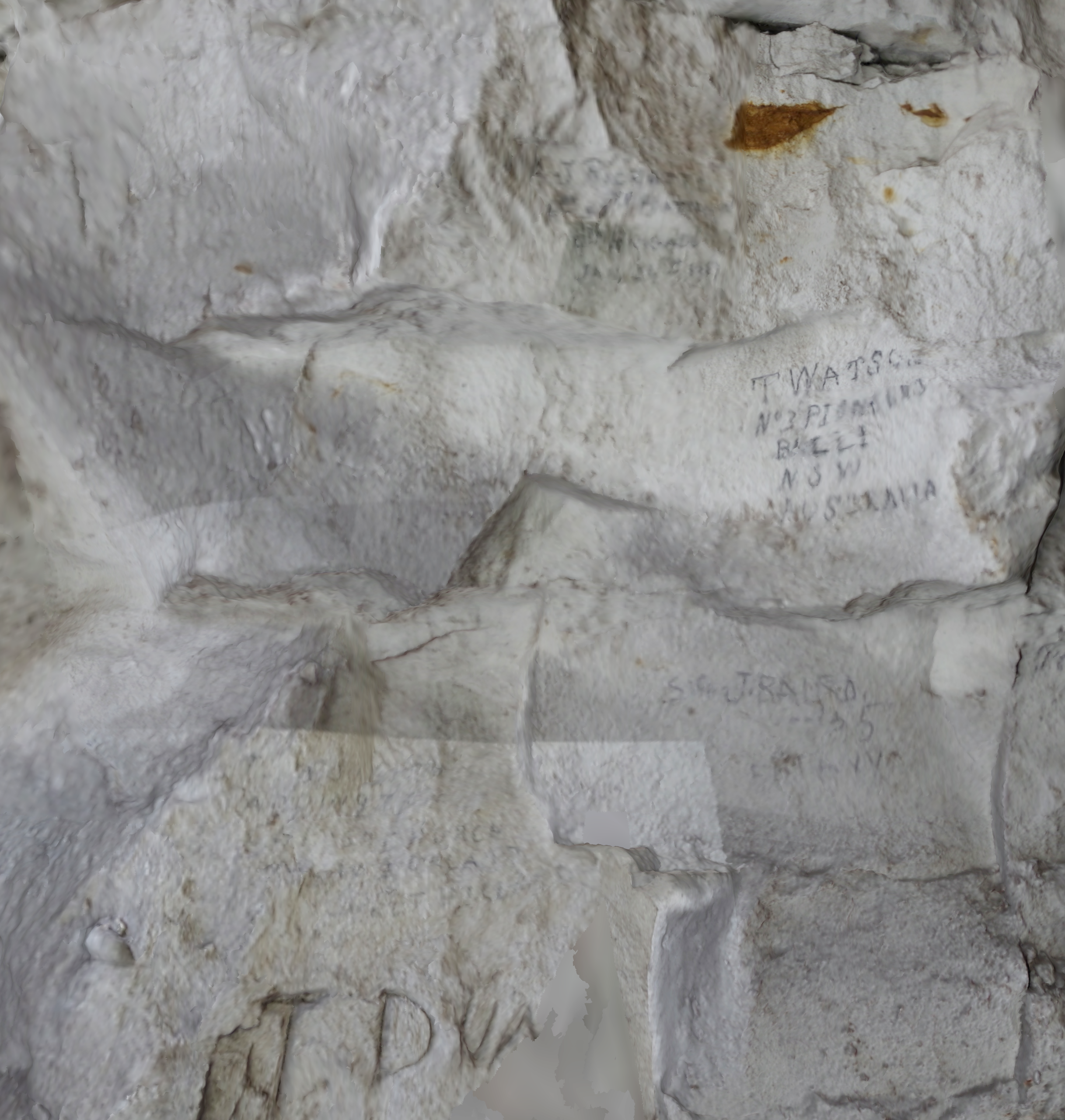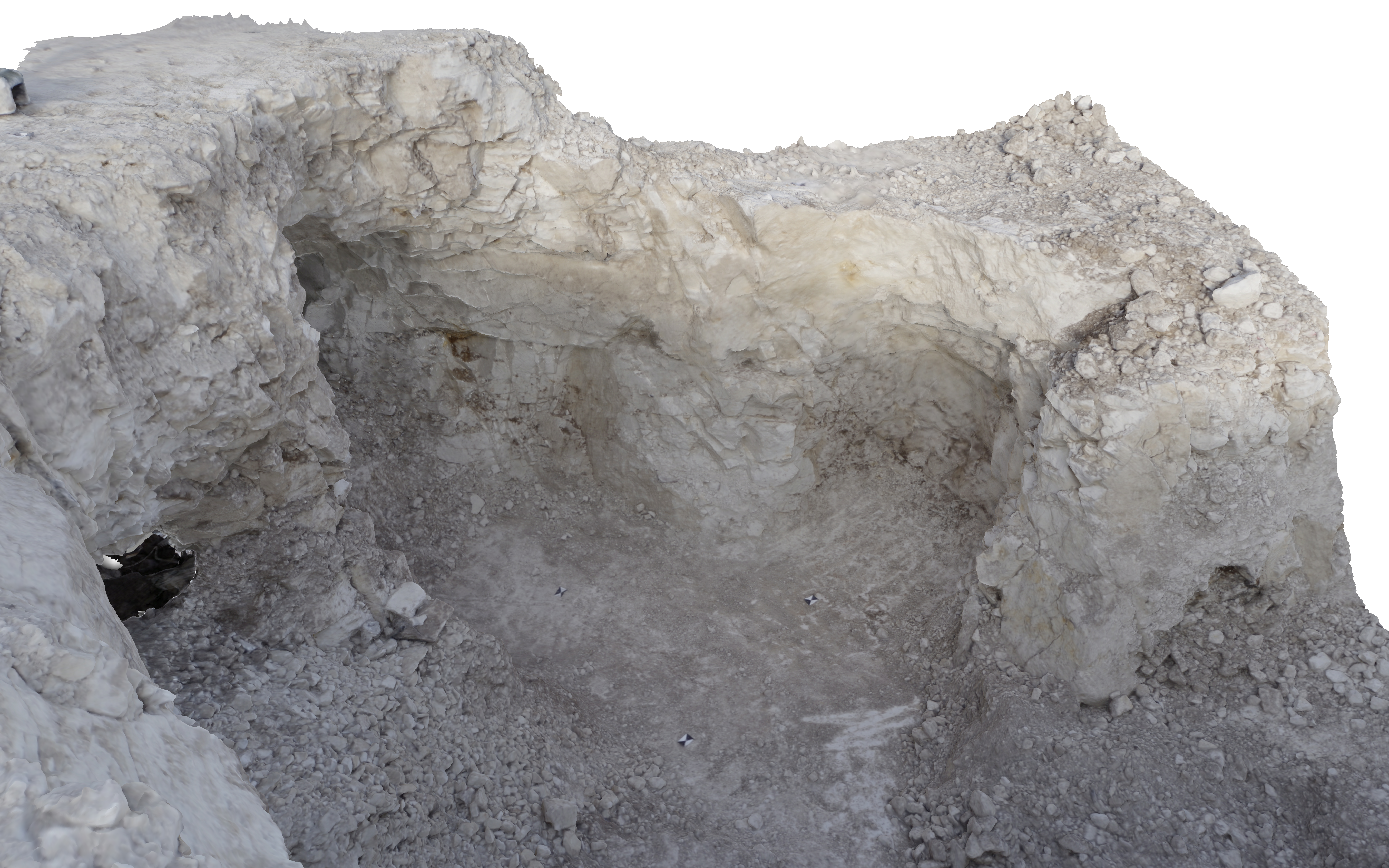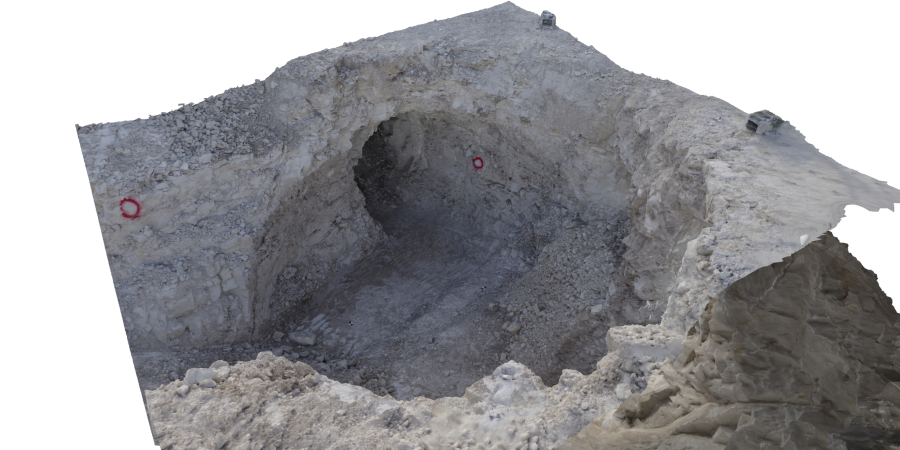Two weeks ago we talked about the compelling WWI history of our Larkhill site with its practice trenches, tunnels and personal stories of the men that trained there. Excavations here have been undertaken by Wessex Archaeology, on behalf of WYG, for the Defence Infrastructure Organisation.
This week we want to share an example of the names written onto the walls of tunnels by Australian and British soldiers trained at Larkhill. Much like the chalk block we shared last week, this collapsed tunnel intersection was recorded using photogrammetry. This area of the tunnels was discovered collapsed and was machine excavated to reveal as much as was safe.

Due to the limitations of sharing a model of this size online we have had to reduce the texture quality and decimate the mesh. The result is that it is not possible to read the writing on this Sketchfab model, though it is identifiable. The screenshot below shows what is visible in our fully detailed model. Amongst the names in this tunnel are Privates Baird, Dunn, Fleming, Organ and Watson. We are continuing to research the lives and military careers of all of the named individuals we have come across at Larkhill and intend to release more details in the future.
This model also gives us the opportunity to discuss the technique of photogrammetry a bit more and some of the limitations we faced in recording this tunnel intersection.
Photogrammetry involves taking multiple photographs of the subject, covering every surface of it which is visible. By ensuring there is sufficient overlap between these photos, and that they contain all of the details that you are interested in you are able to generate a 3D model using photogrammetric software. This functions by identifying common points within different photographs, working out where each of the photographs were taken from based on this information, and then using the photographs to create a three-dimensional mesh. This mesh is then overlain with a texture generated by combining the colour information from all of the photos used in the creation of the model.
As this technique relies on photography, lighting and access are key issues. In the case of this tunnel both were problematic. The bright chalk reflects the sunlight very strongly in exposed areas, whilst the areas still underground are considerably darker. Trying to expose photographs to deal with these two extremes can be tricky, and in order to avoid over exposure in the brighter areas, where soldiers had written their names, it was necessary to leave the darker areas under exposed. In addition to this, health and safety considerations of working in a collapsed tunnel meant that we could not send anyone into the covered areas, limiting our ability to photograph all areas of the tunnel intersection. The result of these two factors is a loss of detail, and some areas not being modelled, leaving holes in the mesh. These have been infilled to create a complete solid, and you will be able to identify areas where this has been done.
What this demonstrates however, is that even in the most difficult of circumstances we can produce a high quality model that gives us a better record of our heritage than otherwise available. In this case we have been able to record not just the writing of the soldiers training at Larkhill, but the position of that writing, and a number of other features that tell little stories about how this tunnel intersection was used. It is this extra context that can really bring archaeology to life.

We will be releasing more 3D models in the weeks to come, but for now see if you can find the writing in the model; there are more names we’ve not shown you! If you would like to discuss using Wessex Archaeology’s photogrammetric recording services, please get in touch.
